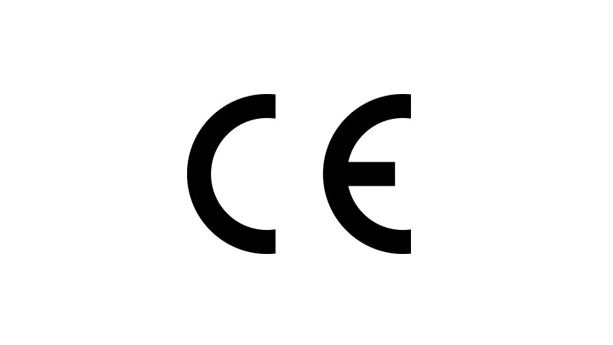
Button cell or coin batteries, including devices containing these, are subject to various regulations and safety standards in the EU. This includes the Batteries Regulation, Toy Safety Directive, and the General Product Safety Regulation.
However, the requirements depend on various factors, such as age groups and the type of product the batteries are used for.
In this guide, we take a closer look into these requirements, to help you navigate the various regulations, directives, and standards related to button cell and coin batteries in the EU.
Content Overview

FREE CONSULTATION CALL (US, EU & UK)
- Request a free 30-minute call with Ivan Malloci to learn how we can help you with:
- Find product requirements
- Certification and labeling
- Lab testing
Batteries Regulation
The Batteries Regulation covers batteries and products containing batteries or that are designed to contain them, including button cells and coin batteries. The regulation includes requirements such as substance restrictions, labelling, documentation, testing, and extended producer responsibility (EPR).
Requirement exemptions for button cell batteries
The rgulation contains several exemptions for button cell batteries:
a. They are exempted from performance and durability requirements for portable batteries of general use
b. Specifically, zinc air button cell batteries are exempted from the lead restriction requirements until 18 August 2028
Harmonised standards
There exist several standards that are harmonised under the regulation, which are available on the CENELEC website. Although we could not find a standard that is specific for button cell and coin batteries, it is possible that some of them also cover these types of batteries.
Here is an example of a harmonised standard under the regulation:
EN IEC 62485-5 – Safety requirements for secondary batteries and battery installations – Part 5: Safe operation of stationary lithium-ion batteries
Documentation
Here we list the main documents that should be produced to comply with the Batteries Regulation:
| Title | Description |
| Declaration of Conformity | The declaration of conformity should be issued by the manufacturer. The document communicates that the product conforms to the regulation, and contains information about standards applied and information about the product. |
| Technical documentation | The technical documentation contains documents and information that make it possible to assess the battery’s conformity with the Batteries Regulation’s requirements.
The required information is specified in the regulation. |
| Instructions and safety information | The regulation requires battery products, including button cell and coin batteries to come with instructions and safety information.
Products incorporating such batteries should come with information instructions on the use, removal, and replacement of the batteries. |
| Test reports | Test reports are documents that specify a test on a product sample that was conducted and are used to support the product’s conformity with relevant requirements. |
Labelling requirements

The Batteries Regulation contains labelling requirements affecting button cell and coin batteries. Here we list the type of labelling information required along with the respective description:
| Title | Description |
| CE marking | Products covered by the regulation need to be CE marked.
The CE marking may be followed by the identification number of a notified body, if applicable. |
| Traceability information | The regulation requires covered products to come with the following information for the purposes of traceability:
|
| Product information | The regulation also requires the battery to be accompanied by general information like weight, capacity, and chemistry. |
| Crossed-out wheeled bin | The regulation requires this symbol for the separate collection of batteries. |
Toy Safety Directive
The Toy Safety Directive covers toys, including toys containing button cells and coin batteries. Manufacturers of toys containing such batteries should observe labelling, documentation, and testing requirements.
Harmonised standards
The Toy Safety Directive contains a number of harmonized standards that when applied indicate that the product is in conformity with the essential safety requirements of the directive. Here are the key harmonised standards and their respective descriptions:
| Title | Description |
| EN 62115 – Electric Toys – Safety | This standard covers electric toys like functional electric toys. It contains safety requirements concerning the toy’s electrical function. It also contains accessibility and warning requirements that are relevant to toys powered by button batteries. |
| EN 71 | The EN 71 standards series contains a number of parts. Some parts may be relevant depending on the features of your toy. For example, EN 71-1 covers small part requirements. |
Documentation
The Toy Safety Directive mentions several documents to be supplied either in the context of the conformity assessment procedure or in the context of documents to be supplied with the product. Here are some key documents to be furnished:
- Declaration of Conformity
- Technical documentation
- Instructions
- Test reports
Labelling requirements
The Toy Safety Directive contains several labelling requirements. The following are the types of labelling information mentioned in the directive:
- Information for the purposes of traceability
- CE marking
- Warnings and instructions
General Product Safety Regulation
The General Product Safety Regulation covers virtually all consumer products, including button cell and coin batteries and products containing such batteries.
It requires that products be safe and that certain sources of standards should be consulted where applicable. It also contains documentation, labelling and testing requirements.
EN IEC 62368-1 – Audio/video, information and communication technology equipment – Part 1: Safety requirements
EN IEC 62368-1 is harmonised under the regulation and it contains requirements for equipment powered by button cell and coin batteries.
The fact that the standard is harmonised means, in practice, that you need to comply with its requirements in order to ensure that your product is safe. As far as we know, there are no specific battery standards harmonised under General Product Safety Regulation.
In the next section, we cover some standards relevant to button cell and coin batteries, which can be used to assess safety and performance.
Documentation
The key documents required by the regulation are the following:
- Instructions
- Technical documentation
- Test reports
Labelling requirements
The GPSR also contains labelling requirements that should be observed, such as the following:
- Warnings and instructions (if applicable)
- Information for the purposes of traceability
- Labelling regarding age suitability for children (if applicable)
EN standards for button cell and coin batteries
The General Product Safety Regulation requires products to be safe, no matter if harmonised standards for the product exist or not. If no harmonised standard exists, you can still use national standards, EN standards, or other standards that contain safety and performance requirements for button cell and coin batteries. In this section, we provide some examples of EN standards relevant to button cell and coin batteries.
EN IEC 60086 – Primary Batteries
The EN IEC 60086 standard covers primary cells and batteries. It contains six parts and the application of its various parts would depend on the product in question. It includes warning requirements, child-resistant packaging, and safety and performance requirements like discharge performance requirements.
EN IEC 61960 – Secondary cells and batteries containing alkaline or other non-acid electrolytes
This standard covers coin secondary lithium batteries. It contains requirements to help users of the batteries assess their performance, including performance tests, designations, markings, and dimensions.
REACH
REACH is a regulation that contains substance restriction requirements for many products, including button cells and coin batteries. The regulation lists prohibited substances and, for other substances, restricts their presence in products to specified concentration levels.
Restricted substances
Some substances come with restrictions and they are listed in Annex XVII. Examples of restricted substances relevant to button cell and coin batteries include nickel and mercury.
Substances of Very High Concern (SVHC)
There is also another list of substances that if found at certain concentration levels in articles (> 0.1%) would trigger the following requirements:
a. Notification to ECHA of substances in articles
b. Communication of identified substances and other relevant information throughout the supply chain
Examples of substances of very high concern include the following substances:
- Cobalt dichloride
- Potassium dichromate
Lab Testing
Approaching a lab testing company is necessary to have the product tested and to retrieve lab test reports to support key documents like the Declaration of Conformity and technical documentation.
The tests conducted may vary greatly according to the batteries or the products which incorporate the batteries. For example, EN 62115 focuses on “accessibilities”, as kids should not be able to access batteries as there is a risk of ingestion.
Other standards may focus more on safety testing. Below are some regulations and some information about their lab testing requirements:
| Regulation | Lab testing |
| Batteries Regulation | Substance restrictions testing (e.g. mercury, cadmium, lead). Other types of testing may also be necessary, depending to the type of battery. |
| Toy Safety Directive | Testing under harmonised standards (e.g. EN 71 and EN 62115) which includes substance restrictions testing, construction testing, small part testing, warning requirements, etc |
| General Product Safety Regulation | Engaging in lab testing to comply with the requirements of the regulation may vary according to the standard applied. Your lab testing company should help you understand them. Testing requirements may include battery compartment safety testing, performance testing, and more.
You can search for relevant standards through CENELEC’s site (you can search for keywords like “button cell” or “coin battery”). |
| REACH | Substance restriction testing for substances like nickel, mercury, and more. |
Testing companies
Various lab testing companies can perform the tests specified in product safety standards for button cell and coin batteries, and products containing such batteries. The following are lab testing companies that provide testing services for the mentioned products:
- Intertek
- TÜV SÜD
- Eurofins
















